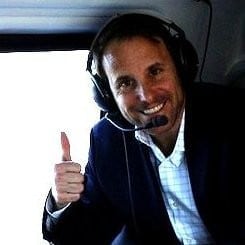Q: What are the most common mistakes founders make hiring their first real sales teams?
A few key mistakes I see start-ups making > 50% of the time:
- Hiring Early Reps (#1 – #3) That You Personally Wouldn’t Buy From. Don’t hire someone with the right resume. Hire someone you’d buy your own product from. Later, once you have a real sales leader on board, she may hire folks you personally wouldn’t buy from. And that’s OK. But it won’t work out while you are Interim VP of Sales.
- Hiring your first VP of Sales from a Fancy Tech Company That’s Actually Not Remotely a Startup Anymore. They almost certainly haven’t actually done what you need them to do before. A little more here: The 48 Types of VP Sales. Make Deadly Sure You Hire the Right One. | SaaStr
- Hiring a Stretch VP of Sales Who Has Never Hired Quota-Hitting Reps Before. A stretch VP is fine, but someone who has never hired a few great reps herself … that’s too risky. A bit more here: The Benefits of Hiring a Stretch VP of Sales (and The Risks) | SaaStr
- Hiring reps and VPs from the competition. 1 or 2 is fine, but in general, the problem with hiring from the competition is we assume they are better than they are. We overindex on the inside information, and how quickly we assume they could scale up … and because of that, we let their other weaknesses slide in candidates we otherwise wouldn’t hire. If you do hire a candidate from the competition, make sure you’d hire her or him anyway, even if they came from “just another company.” Be honest. If you wouldn’t — don’t make the hire.
- Giving Reps Too Much Time. Sales reps don’t have to scale in a day. But they do need to put some real points on the board in one sales cycle.
- Not Training Reps. You have to train your sales reps. Sales reps are often the worst-trained part of an organization. It should be the opposite. The first 1–2 can often learn by osmosis, but after that, you need to really invest in onboarding and training. More here: You Have to Train Reps 3-10. They Won’t Train Themselves. | SaaStr
- Too Few Leads Per Reps. Or Too Many Leads. Too many reps chasing too many leads, no one makes enough money. But also, once you have a lot of leads, if you let reps drown in leads, you won’t close as much from them as you could. More here: How to Close More Revenue Today — With The Leads You Already Have. Use The “3 L’s”. | SaaStr
- Not Paying A Living Wage. Not Paying Market. Ultimately, a sales rep has to close at least 4x her comp to make sales profitable. So a rep with a $120k OTE has to eventually close at least $480k at scale. But not on Day 1. The first quarter or so, ramp up the sales comp program. And don’t pay below market. There are too many options out there.
- Crazy, complicated accelerators and sales comp plans. Too many goals. Keep it simple. Have 1 accelerator, which ideally is beating plan. Too many goals = no goals for a sales rep. Or anyone, really.
- Asking sales reps to do everything, from marketing to qualification to outbound to inbound. Sometimes you have no choice in the early days, but specialize as soon as possible. Closers are good at closing. Openers are good at opening. No sales professional is great at all of it, and most are only good at one piece of it. A little more here: After $2m in ARR — Start Specializing Your Sales Team | SaaStr
- Hiring reps and/or a VP that hasn’t sold at your price point before. Sales is different for a $3k vs. $30k vs. $300k vs. $1m a year product. Very different. Sales professionals can stretch a little up or down from their sweet spot, but not too far. The skills are just too different.
- Giving too much credit to, and focus on, “pipeline” generated. When you are big, pipeline will be an important metric, because it will become very predictable how much will close. But in the early days, not so much. Reps can spend tons of time talking to prospects that never close. So don’t give too much credit to pipeline. Focus first on closed deals, then second on opportunities that are fairly far down the road.
(note: an updated SaaStr Classic post)

